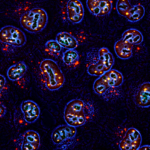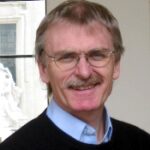Link to Pubmed [PMID] – 21368204
Proc. Natl. Acad. Sci. U.S.A. 2011 Mar;108(12):4858-63
The human APOBEC3 (A3A-A3H) locus encodes six cytidine deaminases that edit single-stranded DNA, the result being DNA peppered with uridine. Although several cytidine deaminases are clearly restriction factors for retroviruses and hepadnaviruses, it is not known if APOBEC3 enzymes have roles outside of these settings. It is shown here that both human mitochondrial and nuclear DNA are vulnerable to somatic hypermutation by A3 deaminases, with APOBEC3A standing out among them. The degree of editing is much greater in patients lacking the uracil DNA-glycolyase gene, indicating that the observed levels of editing reflect a dynamic composed of A3 editing and DNA catabolism involving uracil DNA-glycolyase. Nonetheless, hyper- and lightly mutated sequences went hand in hand, raising the hypothesis that recurrent low-level mutation by APOBEC3A could catalyze the transition from a healthy to a cancer genome.



